Circuit Characteristics:
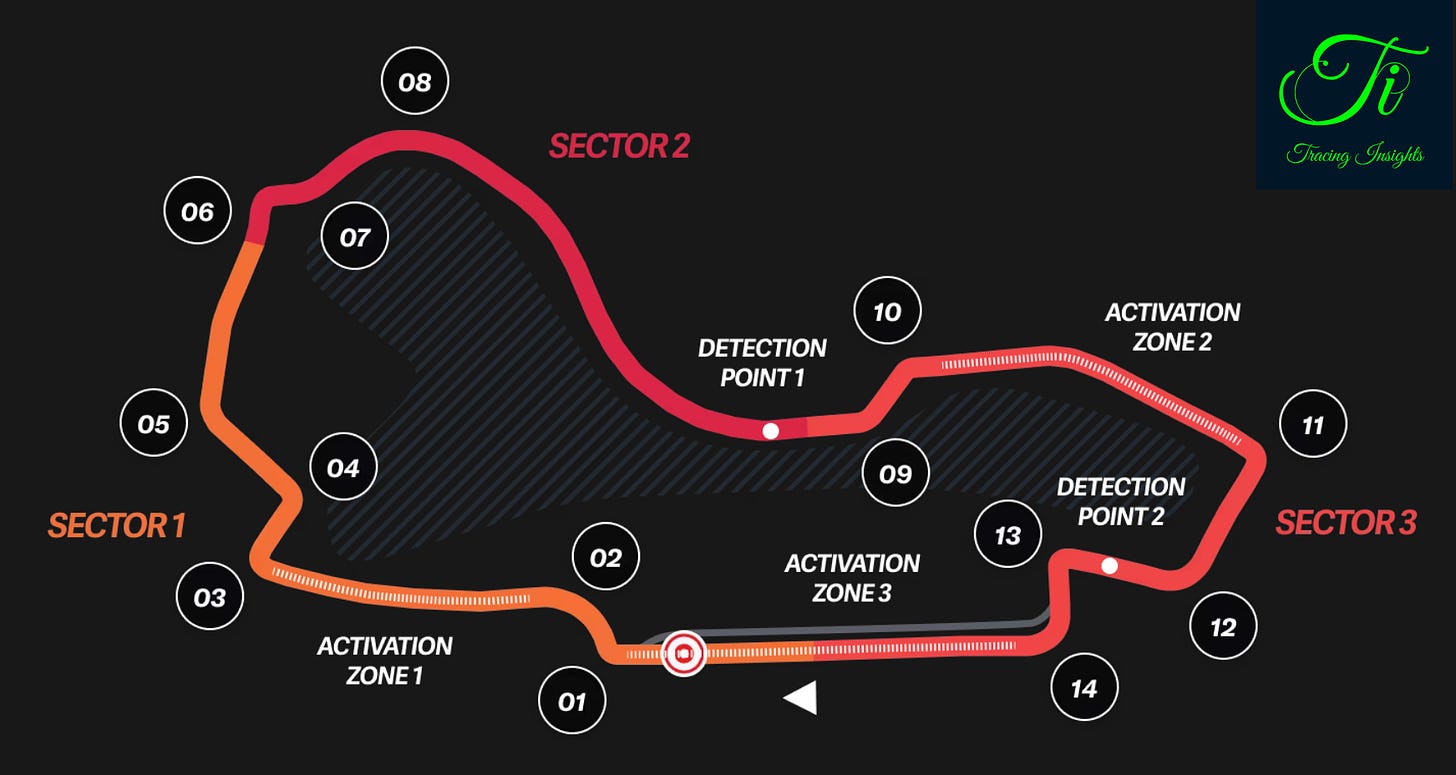
The Albert Park circuit is a temporary track set around Melbourne's Albert Park, with greenery surrounding the 5.278km track giving it a purpose-built feel. Unlike other street circuits such as Monaco and Azerbaijan, Albert Park has a unique combination of street circuit and permanent racetrack characteristics. The unforgiving nature of the barriers that enclose various parts of the track is a defining characteristic of a classic street circuit.
The track has been the home of the Australian Grand Prix since 1996 and is a particularly demanding circuit on the brakes, with heavy braking areas followed by continual accelerations. Fuel consumption also needs to be closely monitored. The narrow run-off areas mean that the barriers are close to the track, leading to regular appearances from the Safety Car.
Turn One at the Albert Park circuit is a challenging tight right-hander with an apex speed of over 150km/h. It's a dangerous bottleneck with a blind apex, immediately followed by Turn Two, leading to a long, flat-out run to Turn Three. In 2002, a massive multi-car collision occurred on the first lap, triggered by Ralf Schumacher's Williams flying over the back of Rubens Barrichello's Ferrari, resulting in over a third of the field retiring.
Turn Three, located at the end of the first DRS zone, is another tight right-hander that presents an opportunity for overtaking. However, it's easy to lock the front-right tire under braking into the corner, which can put drivers at risk of running wide into the gravel trap on the exit.
Turns Nine and 10, already spectacular corners, have become even more fearsome following the circuit alterations. The fast-flowing Turn 9 and Turn 10 sequence is a crucial part of the lap for drivers, where plenty of time can be gained or lost.
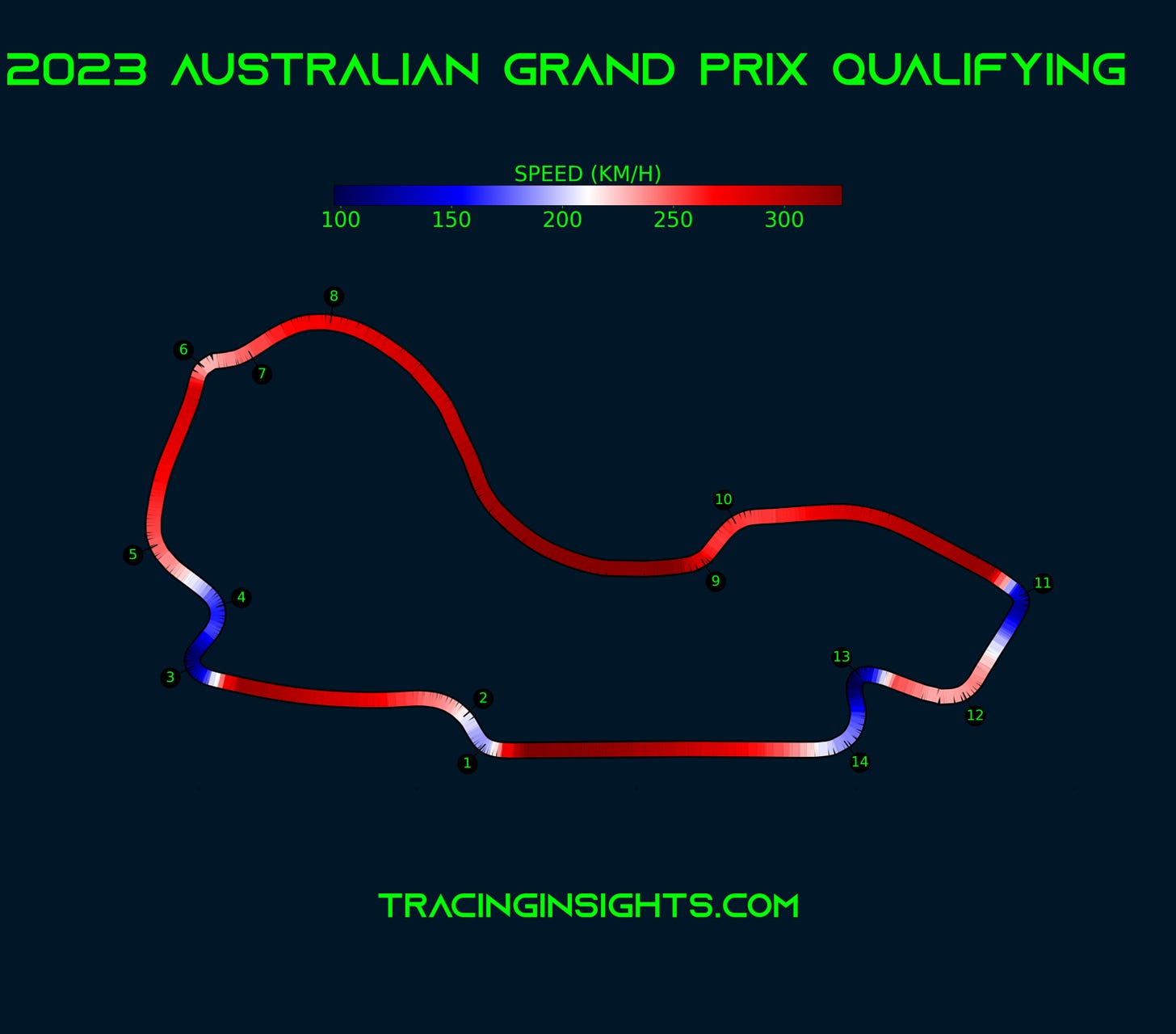
At the fastest point of the circuit, drivers must apply a small dab of brake on the entry to Turn Nine, followed by a second deft touch before Turn 10, leading to a high-speed run to Turn 11.
The Melbourne circuit has the second shortest pit lane on the calendar at just 281 meters, resulting in cars spending only about 13 seconds at pit lane speed, making it the shortest pit stop time of any race during the year.
The significant time difference of 11 hours between Melbourne and the teams back in Europe supporting remotely adds an additional level of challenge to the weekend.
With 72% of the lap time and 79% of the lap distance spent at full throttle, Albert Park ranks third highest of any circuit on the calendar based on these metrics.
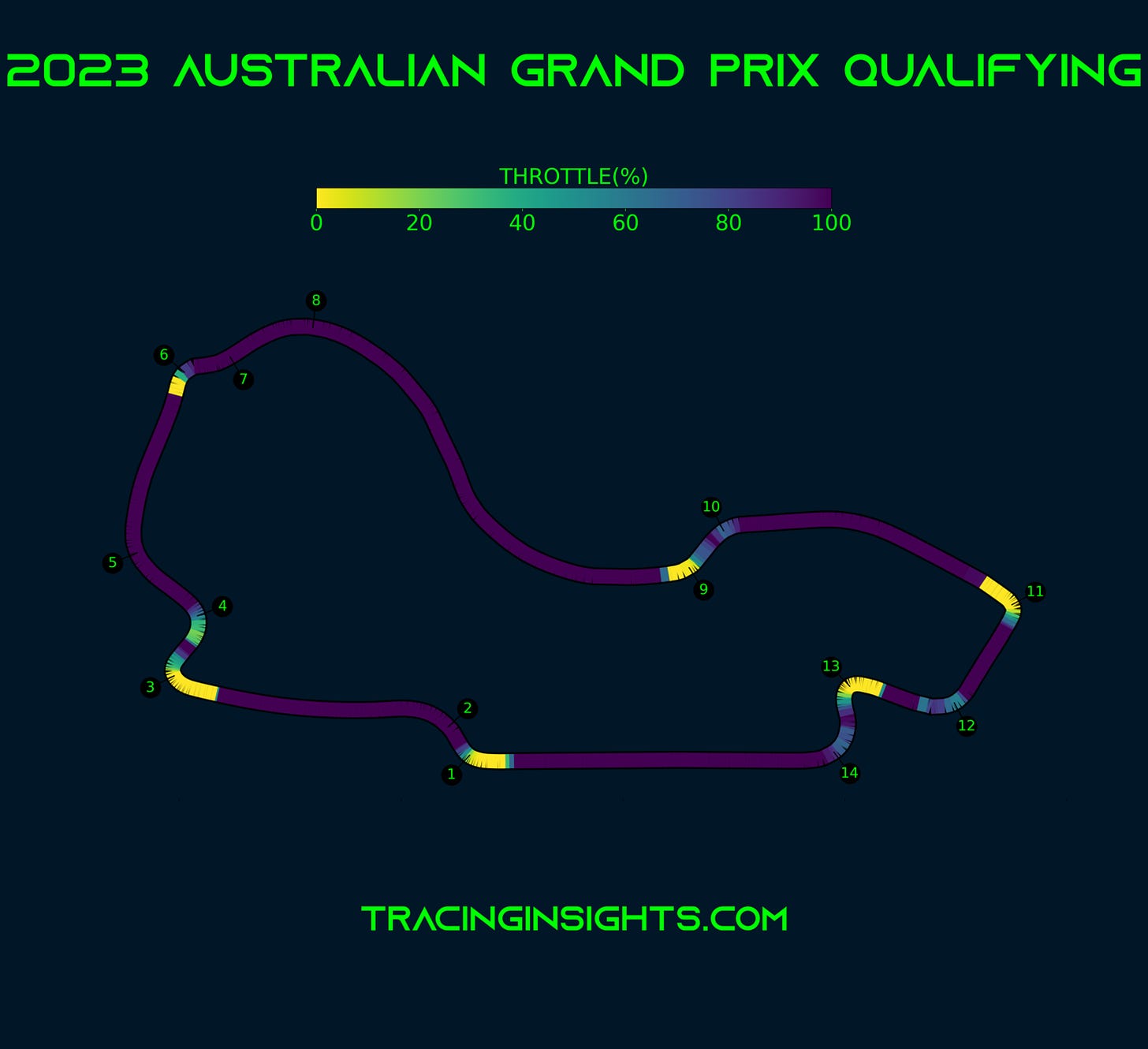
Braking:
The Albert Park circuit is typically used for daily traffic, which means that the track surface is quite slippery on Friday. However, as the cars complete more laps, the asphalt becomes increasingly rubberized, leading to improved braking performance.
The weekend will also feature a host of support races, including Formula 2, Formula 3, the Porsche Carrera Cup, and the Australian Supercars championship. This will result in a substantial amount of rubber being laid down on the track, potentially influencing grip levels and affecting tire performance. This increased grip also results in greater pad and disc wear, as the brakes reach extremely high temperatures. Turn 11, Turn 01, and Turn 03 are considered the most demanding for the braking system.
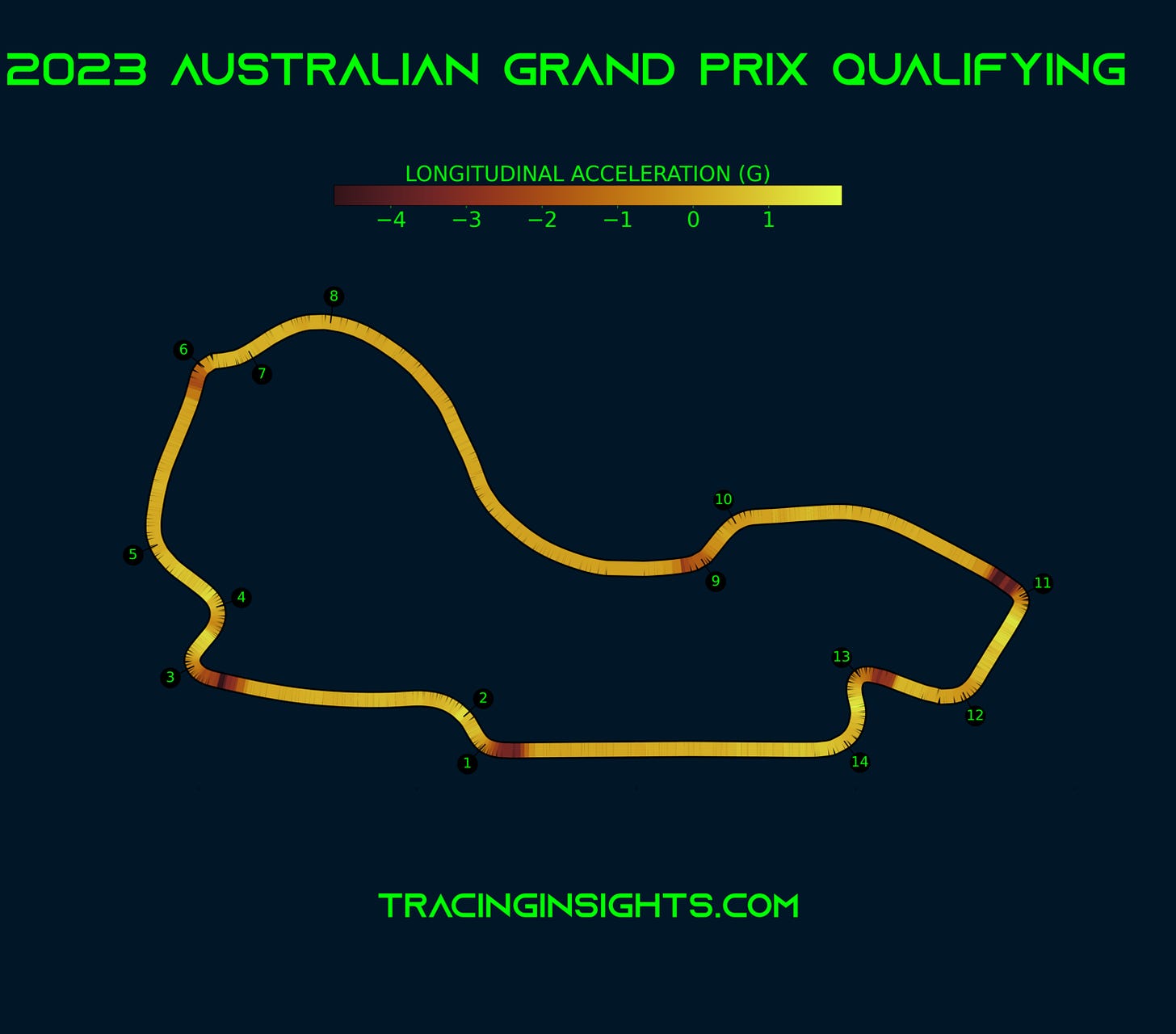
Track evolution is another reminder that the tarmac is also used by road cars, with lap times improving throughout the weekend as debris is swept clear of the racing line and the cars lay down more rubber. This is due to the fact that the track is not solely used for racing, and the surface changes as more cars drive on it.
Track Changes:
The Albert Park circuit has recently undergone a major redesign, which has resulted in lap times being shortened by as much as five seconds. Most of the changes have been made to the middle sector of the track, with the removal of the chicane at Turns 9 and 10, which is now one high-speed corner. Turn 13 has also been modified to increase overtaking opportunities, making the circuit even more exciting for drivers and fans alike.
Prior to the 2022 season, the Albert Park circuit was modified and is now shortened to 5.278 km. It's a temporary track partially run on public roads, with a new tarmac laid as part of the modifications.
The resurfacing of the Albert Park circuit has made it possible for teams to lower their ride height if they wish, as the previously bumpy surface could have damaged the floor. This will be an important factor to consider as teams look to maximize their performance around the circuit.
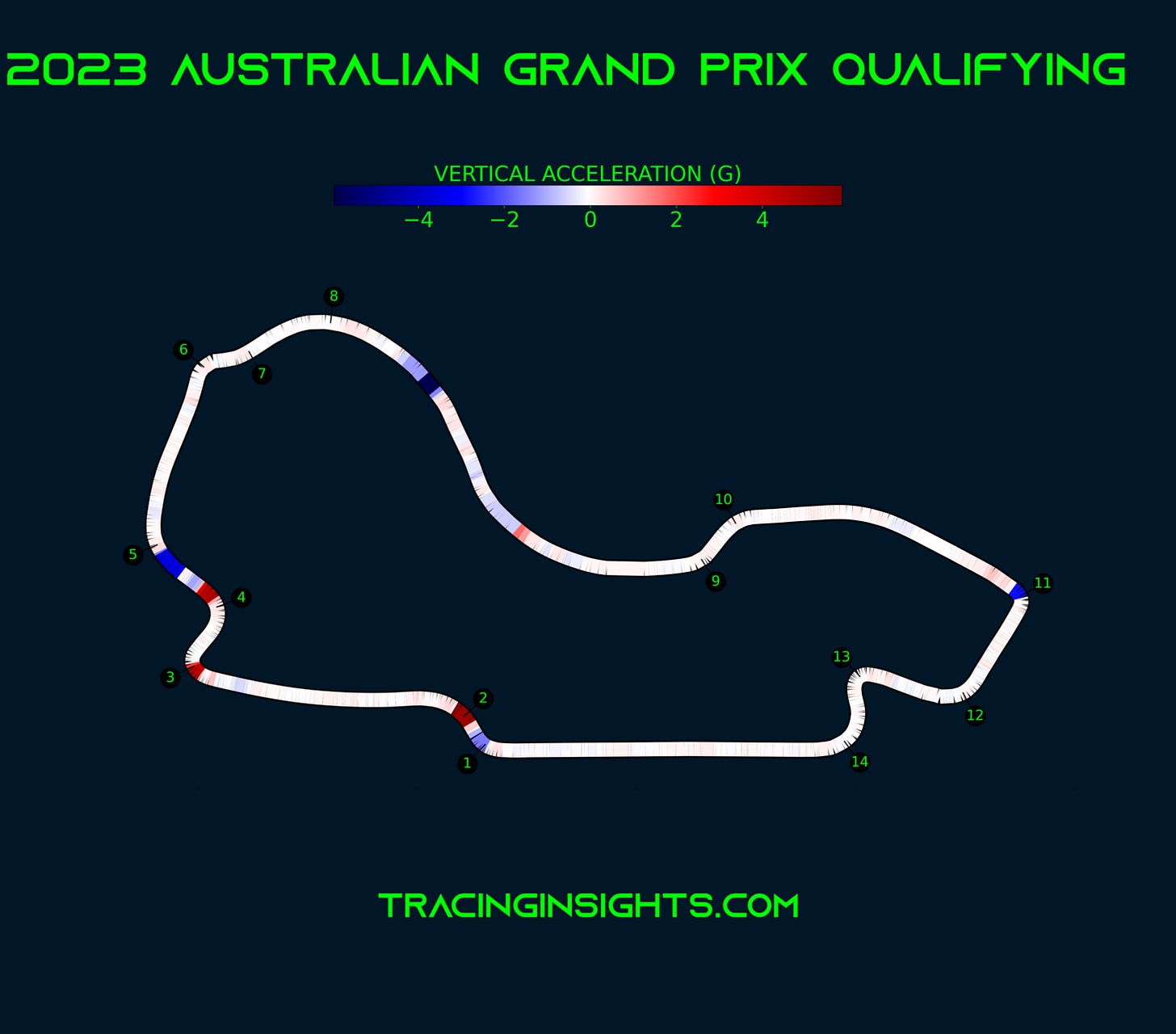
Ride height has been a key talking point since the introduction of the new rules and regulations in 2022, and it will continue to be a focus at this weekend's Australian Grand Prix. Ride height refers to the distance between the car and the ground. The lower the car is run, the more downforce is generated, without significantly increasing drag. It also lowers the car's center of gravity, making it more responsive and easier to handle when cornering or braking, and generates more grip.
Several corners, including Turns 1, 3, 6, 13, and 15, were also widened ahead of last year's race, increasing the possibility for overtaking. Additionally, the circuit's famously bumpy surface was smoothed out, making it a more pleasant drive for those in the cockpit and an easier watch for the engineers and mechanics in the garage.
Turns 9 and 10 are a prime example of the circuit's demands, with drivers experiencing nearly 5 g of lateral force as they approach the first of the turns at around 180 mph, before quickly changing direction for a flat-out right-hander. Changes to the circuit layout ahead of the 2022 season have only added to the challenge, with drivers now able to keep their foot on the throttle from Turn 8 all the way to Turn 11.
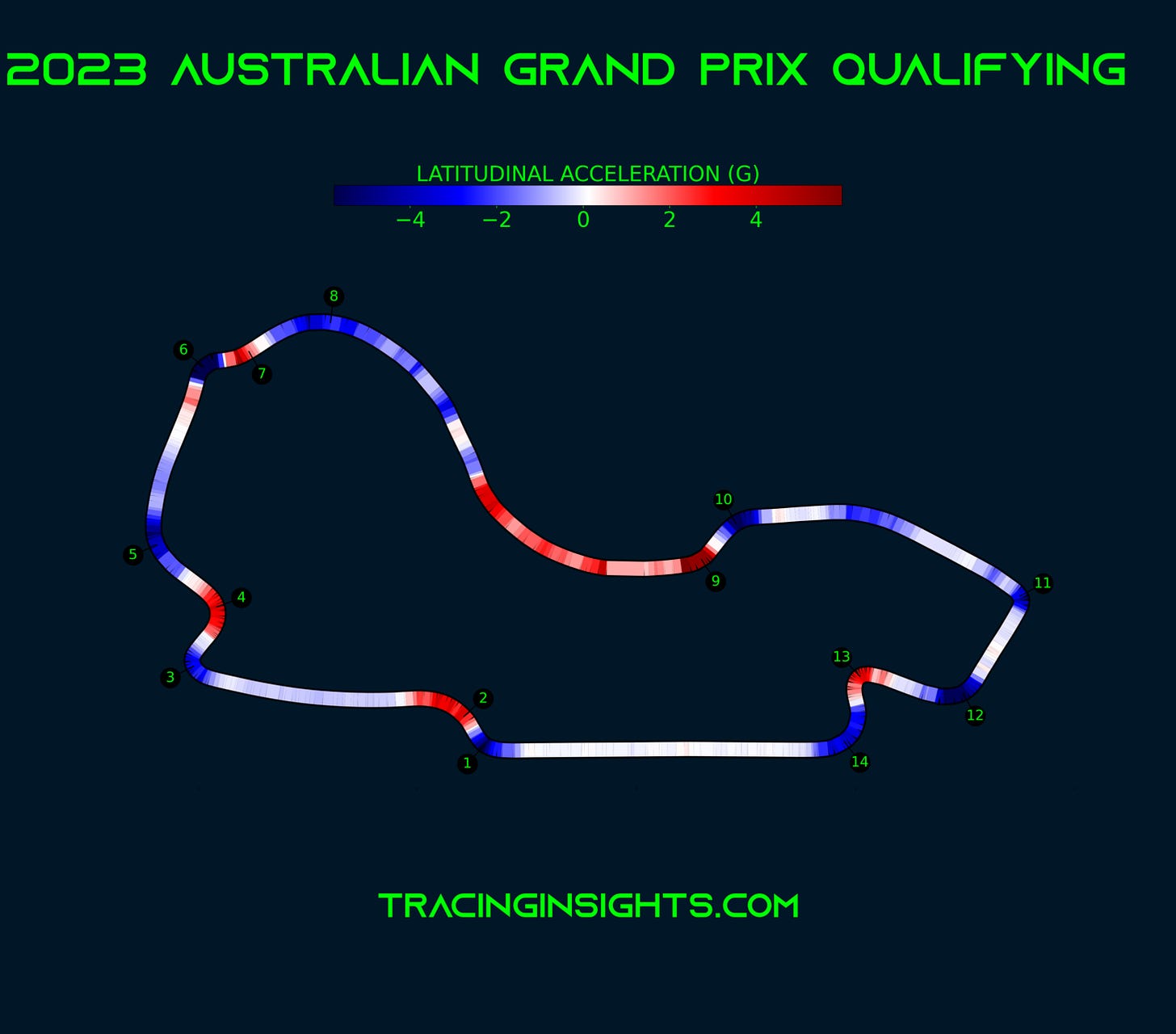
Although the Albert Park circuit is set around public roads, its width and layout provide ample opportunities for overtaking and allow drivers to push their cars to the limit. The track's high-speed cornering and rapid changes of direction make it a challenging and exciting venue for drivers and spectators alike.
Tyre Selection and Strategy:
Pirelli's C5 tyre, the softest in their range for 2024, is set to make its first appearance at the Australian Grand Prix. This year's selection also includes the C4, previously seen in Jeddah, and the C3. This choice marks a shift towards softer tyres compared to the previous year's C2, C3, and C4 combination.
Interestingly, this isn't the first instance of the C5 making its way to Melbourne. In 2022, it was also chosen as the soft option, complemented by the C3 as medium and C2 as hard, excluding the C4.
The decision for this softer tyre array stems from an analysis of last year's race dynamics, which heavily featured the C2. A staggering 47 out of 58 laps saw 10 drivers on the C2, with three managing to extend their use for over 50 laps. The 2023 event was notable for its frequent interruptions, including three safety cars and three red flags, leading to two grid restarts and one rolling restart.
Albert Park's circuit, which has 14 corners, after having undergone recent redesigns for smoother flow. While overtaking remains a challenge, it's not as daunting as before. Traditionally favoring a one-stop strategy, this year's softer tyre selection could disrupt that norm and potentially enhance overtaking opportunities by introducing significant pace variances due to differing tyre performances.
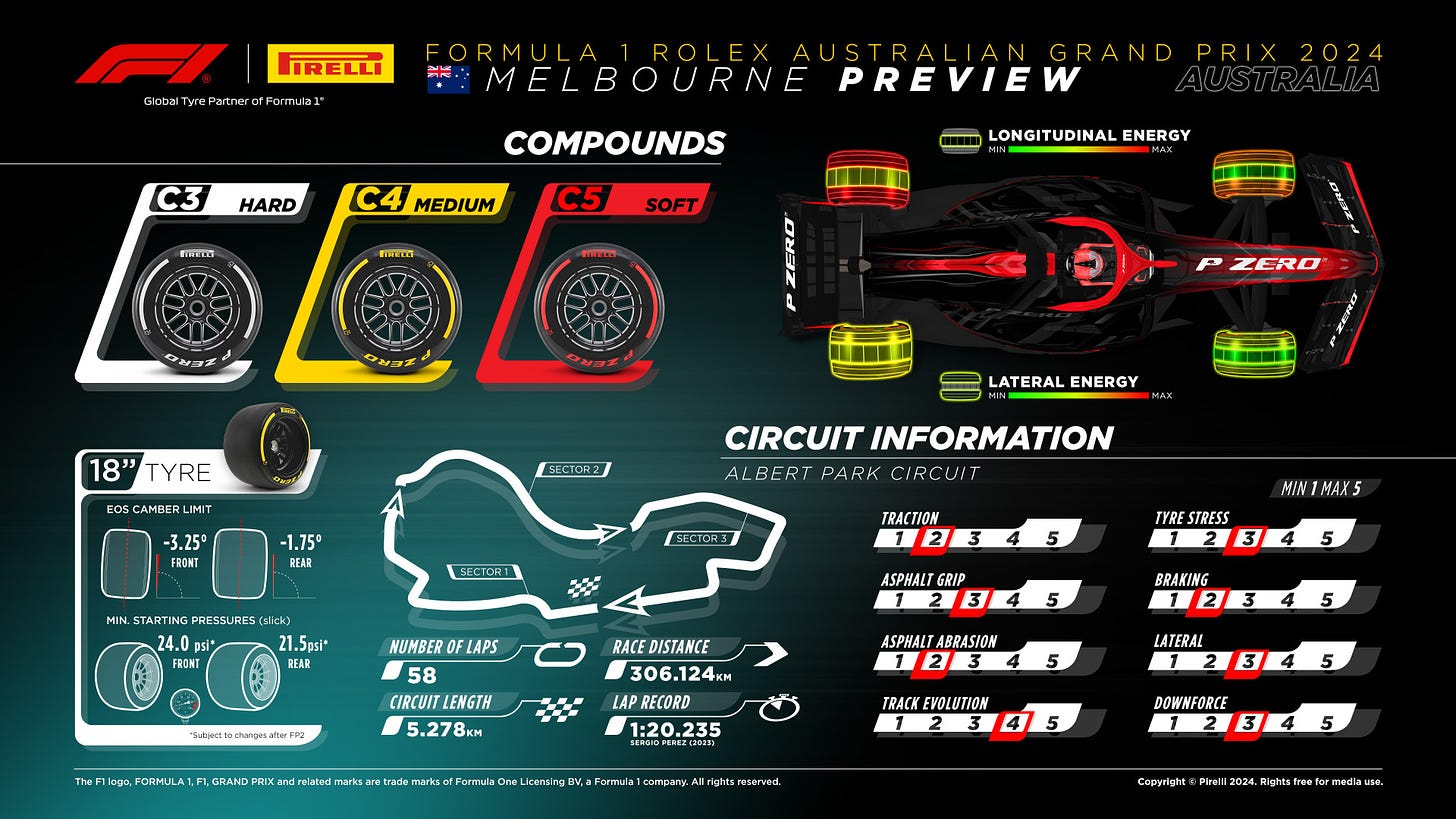
The C5 compound, the softest in the 2023 tire range, remains unchanged for the upcoming Australian Grand Prix. However, its usage has been minimal thus far, with only 140 kilometers covered during the pre-season test in Bahrain. The compound's performance is relatively unknown, with Lewis Hamilton being the only driver to complete a significant long run on it. The Williams drivers used it mainly for in and out laps, while Ferrari and Stake F1 were the only other teams to select the C5 for the test, which took place on the abrasive Bahrain track.
The track is not particularly demanding on tires, with degradation being a more significant factor than wear. The race, now in its 37th edition, is being held at the beginning of Australia's autumn season, which can bring unpredictable weather conditions. Temperature swings and rain have affected the race weekend in the past, adding an extra layer of challenge for the teams and drivers.
Key Statistics:
Michael Schumacher holds the record for the most wins at the Australian Grand Prix, with four victories, all of which were achieved in Melbourne with Ferrari. The Italian team has secured 10 wins in Australia, second only to McLaren's 11 victories. McLaren also boasts the most pole positions in Australia, with 10, while Lewis Hamilton holds the record for the most pole positions at this event, with eight.
In terms of podium finishes, Ferrari and McLaren are tied with 26 each, and Hamilton has stood on the podium in Melbourne an impressive 10 times. Red Bull has secured two victories in Melbourne, in 2011 with Sebastian Vettel and in the previous year with Max Verstappen. The team will be looking to build on last year's success and challenge for the top spot once again.
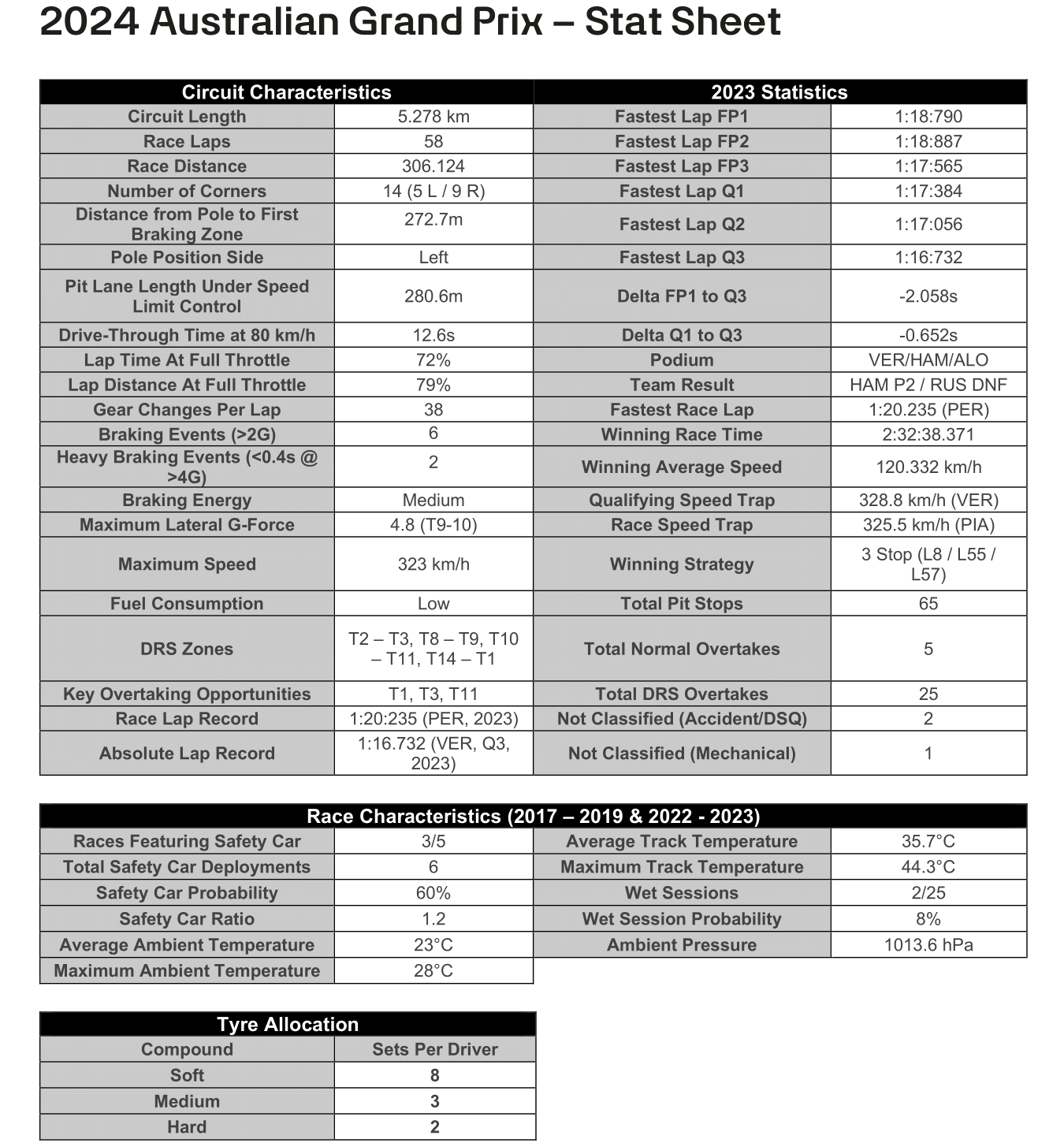
Follow me on Twitter, Mastodon, Instagram, Sub-Reddit, Threads for more analysis